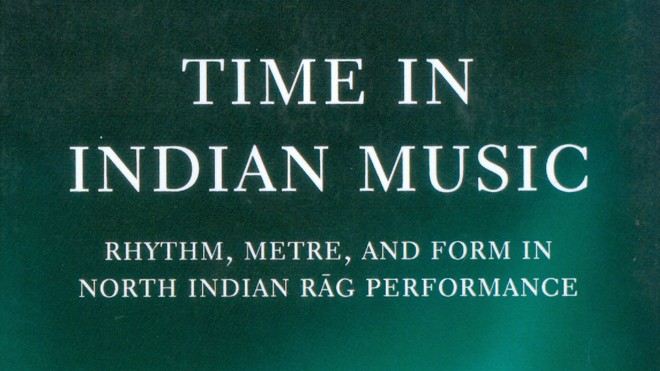
Instead of treating rhythm in a narrow sense, Martin Clayton places it in a broader perspective in determining the concept of time

Many books have been written by western musicologists on Indian music, particularly on the classical forms. There have been few that have addressed the issue or the problem of time. Usually the value or the component of time is measured or evaluated by the tempo or the lai that the musician establishes for himself.
Most books by outsiders, like this one, on music of another culture is based on an attempt to understand the complexities of a musical system that belongs to another culture. Thus the thrust, despite not the initial intention, shifts to explaining the various aspects of the musical system which are very peculiar to that system and cannot be expressed in any simple term. For the term could be generic, containing meaning or associated meaning that might be very different from the one particular to that culture.
The first books that were written by western musicologists or the orientalists were an attempt to understand the system. But there was often an undercurrent of dismissiveness about the music, because it was neither properly understood or, if understood, the complexities considered to be too subtle, and of no concrete value or substance in purely musical terms. The cultural differences were seen in the superiority of one culture against another and, even if highlighted, the undertone was often that of treating it as one inferior.
It has often been said about the arts by western musicologists/thinkers, including music of the subcontinent, especially the classical forms, that it reflects a system or a worldview that is static or at best cyclical. It is contrasted to their own that is seen to be evolving and hence representative of a worldview that does not go round and round in circles but looks forward. It is in search of newer avenues of sensibility and expression than merely indulging in repetition, no matter achieving greater degree of refinement at every attempt.
Instead of treating rhythm in a narrow sense, Clayton places it in a broader perspective and also imparts great significance to the parts and style of performance in determining the concept of time. He creates a distinction between metre and tal -- metre being a more objective category of time while tal is something more subjective.
He argues against the position that rhythm is reflective of a deeper structural pattern in culture or that it represents a particular worldview. Rather, he sees such patterns as revealed by ideological commitments in other domains of culture as having an impact on music which can be at times direct but is more often indirect and contingent. He sees music-making as part of a continuous process of our engagement with the world and with each other, and ideologies being constantly reinforced and challenged as part of that process.
Theory has a considerable impact on the way people transform elements of repertoire which have been passed on to them and on the way the repertoire changes often in ways which could not have been predicted. Rhythm could be a cerebral clock, a natural and spontaneous pulse rate, the significance of breathing and heart rate or a natural walking pace or threshold of perceptions as reinforced by general gestalt tendencies.
A given piece of music does not simply have a given pair of hierarchies, metric and groupings. These hierarchies have to be inferred -- as the Indian musicians see the metric structure of a piece as being indicated by its drum pattern; others may be more inclined to infer metre from the melodic structure and regard drum rhythms as merely decorative. Rhythm is one of the domains within which ideas of repetition, recurrence, change, variation and development are worked out. A piece in which nothing recurs or is repeated is a piece which is impossible to comprehend. Without sameness, without repetition, without equivalence, classical music cannot be an assigned structure and cannot make sense. Music, in fact, more than any other sphere of human activity thrives on repetition.
Parallels have been drawn between tonality and enlightenment in Europe and cyclicity and Indian conception of time. The error has been that while western music is considered to be teleological and developing, Indian music is perceived as cyclic and recurring. Change and recurrence must continue to be aspects of the both repertoires. Focus on rhythm should encourage us to concentrate on music-making and listening perception and cognition on music as a temporal act.
Clayton sees music performance in India as a rich and many-layered cultural dance, in which musicians make statements, appeal, instruct, or plea, relate to others, express their physical and emotional beings and describe their environment. For music to make sense as music, these gestures have to be experienced in time, to mark duration and to impact a sense of regularity and recurrence.
Martin Clayton is a senior lecturer of ethnomusicology at the Open University. He has authored Music -- Time and Place Essays in Comparative Musicology, Portrayal of the East --Music and Orientalism in the British Empire 1780-1940, Music Word and Voice -- A Reader and has been co editor of Cultural Study of Music -- A Critical Introduction.